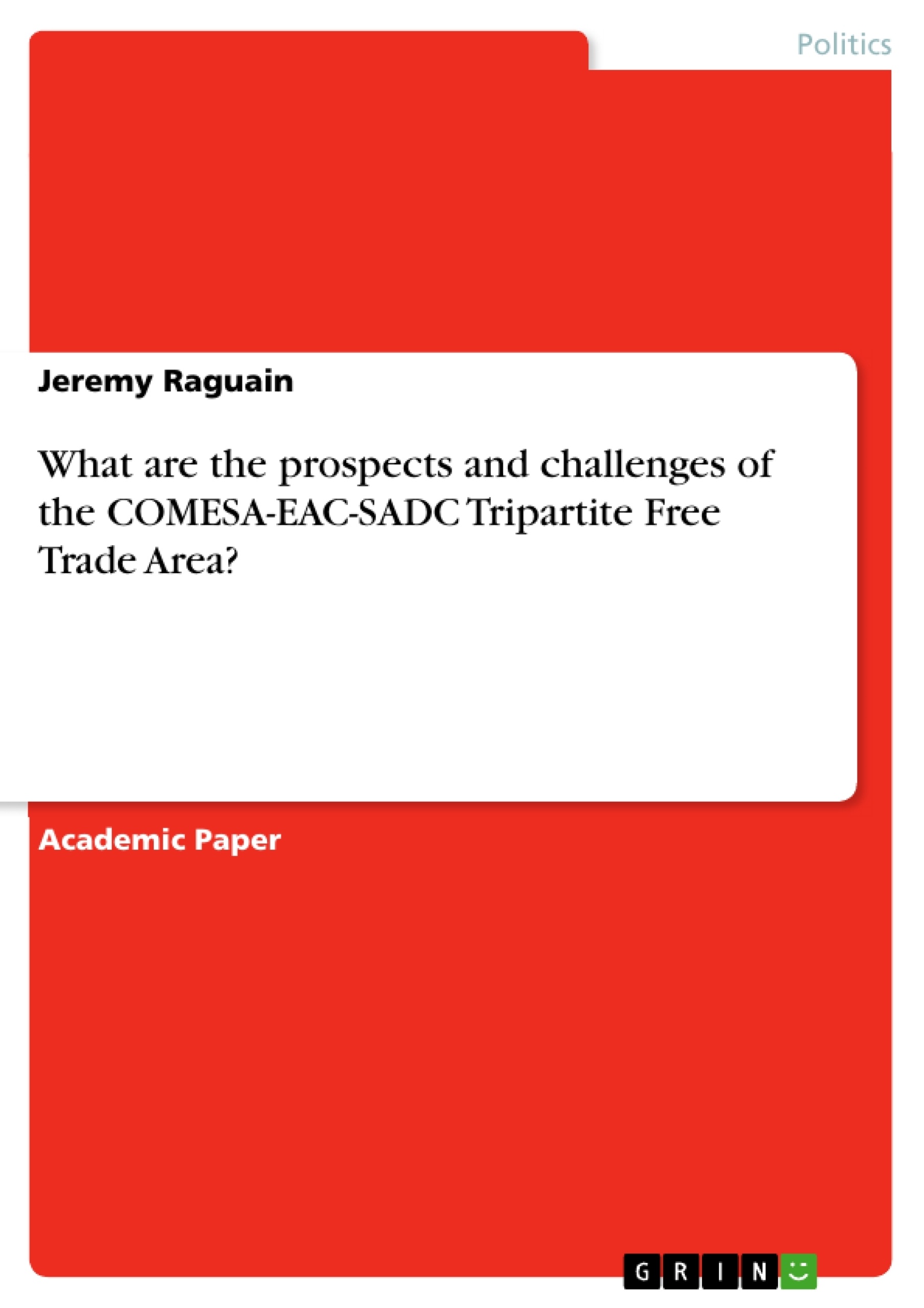Hailed by Dr. Calestous Juma and Dr. Francis Mangeni “as the most significant event in Africa since the establishment of the Organization of African Unity (OAU)” the T–FTA is understood by many to be a vital step towards establishing the African Economic Community (AEC) (Dari, 2015: 38; Juma & Mangeni, 2015). If successfully ratified and implemented the T–FTA would see the merging of Africa’s thee largest and most successful regional economic communities (REC) – SADC, COMESA and EAC. Consequently, the T–FTA would cover approximately 632 million Africans have a Gross Domestic Product (GDP) of between $1.3- $1.6 trillion and a land area that could fit both the United States and China. Undoubtedly, a successfully implemented T–FTA would unleash Africa’s anaemic intra-regional trade level which remains stagnant at 12% (Juma & Mangeni, 2015). Increasing Africa’s intra-regional trade is regarded as a pivotal part of developing its underdeveloped and disconnected economies. Considering the T–FTA’s potential it is hard not to see Juma’s and Mangeni’s point. However, others are not as expectant. Reflecting on how the T–FTA has repeatedly missed its deadlines and considering the varying degrees of failure African regionalism has had in cases such as SADC, COMESA and EAC, it is evident that the T–FTA has a long and uncertain road ahead.
Therefore, to comprehensively discuss and evaluate T–FTA’s potential this essay looks at Africa’s history of regional integration (RI). To do so it begins by defining and contextualising RI, regionalisation and regionalism in Africa. The essay then deliberates over ‘new’ regionalism’s variants in Africa, discerning that the T–FTA and its RECs represent ‘open’ regionalism’s clear dominance. Subsequently, the discussion analyses the ‘episodes’ of African regionalism to contextualise COMESA’s, SADC’s and EAC creation and enable an insight into Africa’s integration track record. Thus highlighting the T–FTA’s context and viability. Following this, the essay unpacks the T–FTA’s raison dêtre and then discusses the views on its, potential, progress and challenges. Ultimately, this critical appraisal of the T–FTA serves to not only understand the actualities of Africa’s largest ongoing attempt at RI, but to also show that scholars of African regionalism must strive away from Afro-optimism and Afro-pessimism towards what Mo Ibrahim calls Afro-realism.
Inhaltsverzeichnis (Table of Contents)
- Introduction
- Regional cooperation, regional integration, regionalism and regionalisation and in Africa
- 'Old' regionalism and ‘new' regionalism
Zielsetzung und Themenschwerpunkte (Objectives and Key Themes)
This essay examines the prospects and challenges of the Tripartite Free Trade Area (T-FTA), a significant initiative aimed at uniting the Common Market for Eastern and Southern Africa (COMESA), the East African Community (EAC), and the Southern African Community (SADC). The essay delves into the historical context of regional integration (RI) in Africa and analyses the various forms of regionalism, highlighting the dominance of 'open' regionalism in the T-FTA and its constituent regional economic communities (RECs). It also discusses the potential, progress, and challenges associated with the T-FTA.
- The history of regional integration in Africa
- The T-FTA as a product of 'open' regionalism
- The potential and challenges of the T-FTA
- The impact of the T-FTA on African regionalism and regionalisation
- The need for Afro-realism in analyzing the T-FTA
Zusammenfassung der Kapitel (Chapter Summaries)
- The introduction sets the stage for the essay by outlining its purpose, which is to analyze the prospects and challenges of the T-FTA. It establishes the significance of the T-FTA as a major step towards the establishment of the African Economic Community (AEC).
- The second chapter delves into the definitions and contexts of regional cooperation (RC), regional integration (RI), regionalism, and regionalisation in Africa. It distinguishes between these overlapping terms and situates the T-FTA as a RI program.
- The third chapter explores the different types of regionalism in Africa, differentiating between 'old' or 'closed' regionalism and 'new' regionalism. It argues that the T-FTA falls into the category of 'new' regionalism, particularly open regionalism, due to its focus on economic globalization and market-driven integration.
Schlüsselwörter (Keywords)
The main keywords and focus topics of the text include regional integration, regionalism, regionalisation, Tripartite Free Trade Area (T-FTA), Common Market for Eastern and Southern Africa (COMESA), East African Community (EAC), Southern African Community (SADC), African Economic Community (AEC), 'open' regionalism, neo-liberalism, and globalisation.
- Quote paper
- Jeremy Raguain (Author), 2017, What are the prospects and challenges of the COMESA-EAC-SADC Tripartite Free Trade Area?, Munich, GRIN Verlag, https://www.grin.com/document/492440



